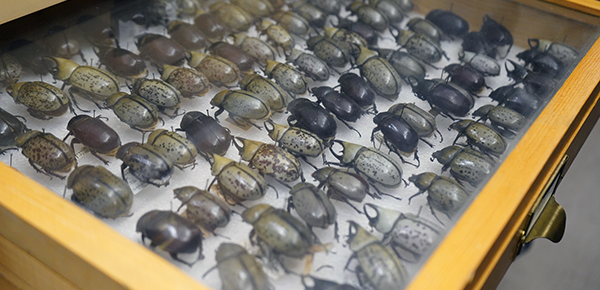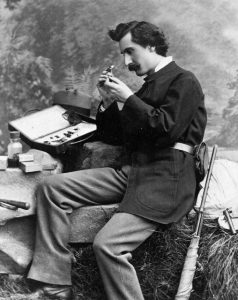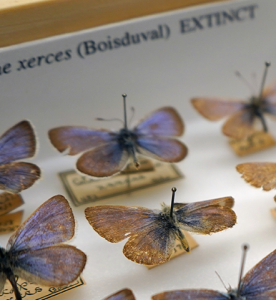
Cabinets of crickets! Drawers of dragonflies! Boxes of beetles and butterflies! (Seven million specimens, in fact.)
The Enns Entomological Museum, part of the College of Agriculture, Food and Natural Resources (CAFNR) at the University of Missouri, is opening its doors (and cabinets of fascinating specimens) to the local community in celebration of its 150th anniversary.
The Open House will be held from 10 a.m. to 2 p.m. Saturday, Nov. 2, on the second floor of the Agriculture Building, at the northeast corner of Hitt and Rollins on the Mizzou campus. The celebration is free, open to the public and geared to all ages.
And although some of the specimens in its collection are from as far back as the 19th century, that doesn’t mean they aren’t still very relevant in the 21st century, said Enns Curator Robert Sites, professor of entomology in the Division of Plant Science and Technology. In fact, he ventures that they grow more relevant with time.
“Insects are so diverse that you need a collection of identified specimens to use as reference, which enables the rapid identification of species of interest,” Sites said. “As collections grow and become more regionally complete, they are then able to support projects that involve investigations about communities rather than just single species.”
Insects are the most plentiful animals on earth, making up 80% of its inhabitants. To put that in perspective, for every human on earth, there are an estimated 1.25 billion insects.
Entomology is the study of insects, and Sites shares that the field really takes a “systems approach” as insects inhabit every part of our natural world. The majority of insects are beneficial.

“Insects are the most important group of organisms in many ways,” he said. “Healthy ecosystems depend on pollinators. Thirty-five percent of the world’s food crops and at least 75% of all the flowering plants on earth are pollinated by insects! This amounts to more than 1,200 food crops and 180,000 different types of plants that help stabilize our soils, clean our air, supply oxygen and support wildlife.”
The need for and importance of insect specimens to support entomologists’ work was understood early in the history of CAFNR and Mizzou. C.V. Riley, an MU professor and the first State Entomologist for Missouri, is considered the “founder of modern entomology” and was a talented artist who drew wonderfully detailed sketches of insects. In 1874, he donated his private collection to start the museum and became its first curator. At least one specimen remains from Riley’s personal collection and will be on display for the Open House, Sites said. Riley also initiated the National Collection of Insects at the Smithsonian Museum of Natural History and was honorary curator of the collection at the time of his death in 1895.
Over the years, the collection grew as other students and scientists followed in Riley’s footsteps. The museum has seen donations including 300,000 beetles in the 1940s, 4.5 million aquatic insects donated by the Missouri Department of Conservation in the late 1990s, and a donation of more than 20,000 moths in recent years.
Enns is used for teaching, research and outreach activities, including: to create publications documenting fauna of Missouri; as a library for rapid identification; to loan to scientists worldwide for their studies; as a repository for specimens from state agency research projects or those reported in publications; outreach to visitors; graduate student support; workshops; answering contemporary questions about environmental change over time; and to help in making conservation decisions.
Today, the museum holds approximately 7 million specimens of insects, arachnids and fossils, each accompanied by collection data – and is the primary source of specimens representative of the Ozark Plateau.
“The most scientifically valuable species in our holdings is the extinct Xerces blue butterfly, [which also will be on display at the Open House],” Sites said. “We also have a number of species listed as federally endangered or threatened.”

The holdings at Enns are one of the two largest at a university-based insect museum worldwide, along with the museum at Cornell University.
In 1980, the museum was named for Wilbur Enns, who had, at that time, been the longest curator (1953-78). Thomas Yonke followed Enns, and Sites followed Yonke in 1991.
Join the museum for fun for the entire family Saturday, Nov. 2, as the milestone is celebrated with activities including:
- Bug-related arts and crafts
- Live insects (like tarantulas and Madagascar hissing cockroaches!)
- Specimens of extinct insects
- An insect discovered at and named for Mizzou
- A timeline of Enns’ history
- Tours of the museum.
See photos from the event.